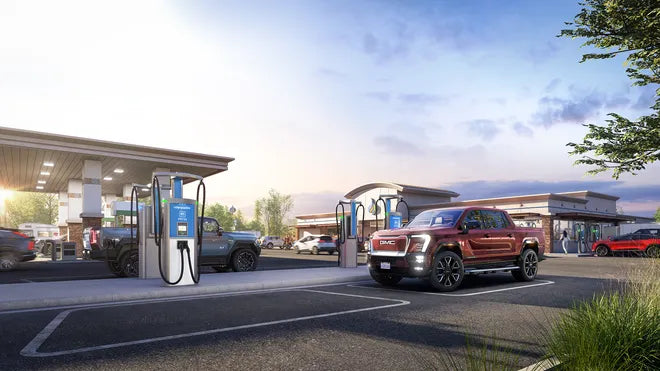If you’ve ever browsed an electric vehicle (EV) spec sheet, you’ve likely seen numbers like “77 kWh” or “100 kWh battery pack.” But what exactly does kWh mean, and why is it the go-to unit for EV battery capacity? Understanding kilowatt-hours will help you make informed decisions when comparing EVs, planning trips, or estimating charging costs.
1. The Basics: What Is a kWh?
kWh stands for kilowatt-hour, a unit of energy.
-
Kilowatt (kW): A measure of power — the rate at which energy is used or produced.
-
Hour (h): Time over which that power is sustained.
Think of kWh as the “distance” your battery can travel in energy terms, while kW is the “speed” at which that energy is used or replenished.
Example:
-
If your EV consumes 20 kW of power while driving, and you keep driving for 1 hour, you will use 20 kWh of energy.
2. Why EV Battery Capacity Is Measured in kWh
Manufacturers express battery capacity in kWh because:
-
It’s a direct measure of stored energy — just like liters in a fuel tank.
-
It’s comparable across models — regardless of voltage or cell chemistry.
-
It links to range — more kWh usually means more miles.
3. How kWh Relates to Driving Range
The relationship between battery size and range depends on your EV’s efficiency, measured in miles per kWh (U.S.) or kWh per 100 km (Europe).
Formula:
Example:
-
77 kWh battery × 3.5 miles/kWh = ~270 miles of range
4. The Hidden Factor: Usable vs. Gross kWh
Not all of the battery’s kWh is available for driving.
-
Gross Capacity: The total physical size of the battery pack.
-
Usable Capacity: The portion accessible to drivers, with buffers to prevent overcharging or deep discharging.
Example Table:
| EV Model | Gross kWh | Usable kWh | Reason for Buffer |
|---|---|---|---|
| Tesla Model 3 LR | 82 | ~77 | Battery longevity |
| Hyundai Ioniq 5 | 77.4 | ~74 | Thermal safety |
| Nissan Leaf 40kWh | 40 | ~37 | Cell protection |
Alt Text: Table comparing gross vs usable kWh in Tesla Model 3, Hyundai Ioniq 5, and Nissan Leaf, showing how buffer space protects battery life.
Download Chart (PNG)
5. kWh and Charging Time
Charging time depends on two factors:
-
Charger Power (kW) — higher means faster charging.
-
Battery Size (kWh) — larger packs take longer to fill.
Approximate Charging Time Formula:
Example:
-
77 kWh battery on 11 kW home charger ≈ 7 hours from empty to full.
6. kWh and Your Electricity Bill
Home charging cost = kWh consumed × local electricity rate.
Example:
-
77 kWh battery × $0.15/kWh = $11.55 for a full charge.
-
If you drive 270 miles per charge, cost per mile ≈ $0.043.
7. Factors That Affect Real-World kWh Usage
Even if two EVs have the same battery size, range can differ because of:
-
Driving Speed: Higher speeds = more drag = more energy use.
-
Weather: Cold weather increases battery resistance and heating needs.
-
Terrain: Hills consume more power uphill (regen helps downhill).
-
Driving Style: Aggressive acceleration drains energy faster.
8. kWh vs. kW: The Common Confusion
| Term | What It Measures | EV Context |
|---|---|---|
| kW | Power (rate) | Charger speed or motor output |
| kWh | Energy (amount) | Battery capacity or total energy used |
Simple Analogy:
-
kW = speedometer (how fast you’re using energy)
-
kWh = fuel tank size (how much energy you have)
9. How Much kWh Do You Really Need?
-
City Commuter: 40–50 kWh battery may be enough.
-
Suburban Family: 60–80 kWh for mixed driving and road trips.
-
Long-Distance Driver: 90+ kWh for maximum flexibility.
10. The Future of kWh in EVs
Battery technology improvements will not only increase kWh capacity but also boost energy density (more range without bigger packs). Solid-state batteries could allow 100+ kWh in a smaller, lighter package within the next decade.







Share:
🔋 How to Preserve Your EV Battery Life Over Time
EV Charging Cords vs Wall Boxes: Which One Should You Buy First?